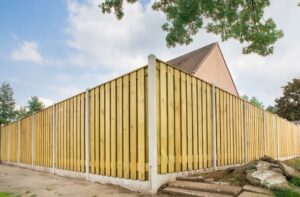Everything About Wichita Falls, Texas
History
The area now known as Wichita Falls was originally inhabited by Native American tribes, including the Wichita and Taovaya people. The first Europeans to visit the area were the Spanish conquistador Francisco Vázquez de Coronado and his expedition in the 1540s.
In the 1860s, traders Jesse Chisholm and James Elwell established a trading post near the confluence of the Wichita River and Holliday Creek. This attracted more settlers to the area, and a small community formed.
The city was officially established in 1872 when the Wichita Falls Town Company purchased land from local resident Joseph Alexander Kemp. The city was named Wichita Falls after the nearby Wichita River waterfalls.
Wichita Falls saw rapid growth in the late 1800s after railroads arrived connecting it to other major cities. The cattle industry thrived, and by the end of the 19th century, the city was the world’s leading cattle shipping center. Oil was discovered nearby in 1907, further stimulating the local economy.
During World War II, Sheppard Air Force Base was built near Wichita Falls to train pilots. The base continues to be a major driver of the city’s economy. Today, Wichita Falls remains a regional economic hub, supported by oil, manufacturing, agriculture, and aerospace industries.
Geography
Wichita Falls is located in north Texas near the Oklahoma border, about 100 miles northwest of Fort Worth. It sits at the junction of U.S. Highways 281, 287, 281, and 82.
The city lies on the Wichita River, just below its confluence with Holliday Creek. Upstream from Wichita Falls, the river forms Lake Wichita, a reservoir that provides drinking water to the city. Downstream, the Wichita River ultimately flows into the Red River.
Wichita Falls has a total area of 70.3 square miles. The terrain is generally flat plains, with some rolling hills on the city’s eastern side. Much of the native prairie grassland has been converted to cropland, pasture, and urban development.
The city has a number of parks, including Lucy Park which runs along the Wichita River and features an artificial waterfall. Other major parks include Kiwanis Park, Milam Park, and Scotland Park.
Geology
Wichita Falls lies within the Western Cross Timbers region, characterized by alternating sandstone ridges and limestone valleys running northwest to southeast.
Underneath the area’s shallow soil layer lies the Permian-age Quartermaster Formation, composed of dolomite, gypsum, shale, siltstone, and sandstone. This rock unit is an important source of groundwater for the city. Below this sits the Permian-age Clear Fork Group shale, a major oil- and gas-producing rock unit in the region.
The geology around Wichita Falls consists mostly of gently rolling plains and tablelands. However, along the course of the Wichita River there are steeper valley walls cut into the softer shale layers. This includes an area of 50-foot tall bluffs along the river’s east bank which creates a prominent landmark within the city.
Overall, the local bedrock and soils provided favorable conditions for early settlement. The availability of groundwater and building materials like stone and clay enabled development. Meanwhile, the fertile soils allowed for productive agriculture. The discovery of oil in underlying shale formations brought added economic benefits.
Neighborhoods
As a mid-size city, Wichita Falls contains a mix of neighborhood types. These include:
- Downtown – The original downtown area near the railroad tracks contains a mix of small businesses, restaurants, offices, and loft apartments. Many of the historic brick buildings date back to the city’s founding days.
- Midtown – Moving northwest from downtown, Midtown is a predominantly residential area with homes built from the 1920s-1950s in a mix of Craftsman, Tudor, and ranch styles.
- Westside – Further west, this area contains more modern suburban-style neighborhoods developed from the 1960s onward with mostly single-family homes.
- South Wichita Falls – South of downtown is a socioeconomically diverse area with neighborhoods ranging from working-class and industrial to traditional middle-class suburban.
- Eastside – East of downtown, the Eastside contains Wichita Falls’ wealthiest neighborhoods with large homes on expansive lots.
- Lake Wichita – Surrounding the city’s lake are higher-end waterfront residences, parks, and recreational amenities.
As Wichita Falls has grown, the city has sought to annex surrounding suburbs. Today it has a compact urban footprint without major satellite towns. However, distinct historic neighborhoods help give different parts of the city unique local culture and character.
Climate
Wichita Falls has a humid subtropical climate, characterized by hot summers and cool winters.
Winters are relatively mild, with average highs around 50°F in January. Overnight lows typically drop into the 30s. Cold snaps can bring freezing temps or even snow, but significant snowfall is rare. The coldest temperature on record is -12°F in February of 1933.
Spring starts bringing warmer weather in March and April with average highs climbing into the 70s. Spring also tends to be the wettest time of year, and Wichita Falls gets multiple intense rainstorms and chances for severe weather like hail or tornadoes.
Summers are hot and humid, ranging from 90-100°F on most days. The highest recorded temperature is 117°F from June 1980. Summer also brings slightly less but still significant rainfall.
Fall is a transitional time with slowly cooling temps. September and October remain quite warm in the 80s but November starts to see chillier weather returning. Wintry precipitation becomes possible by late November.
Overall, Wichita Falls sees big seasonal swings and occasional severe weather. But abundant sunshine prevails through much of the year, enabling plentiful warm-weather outdoor activities. Irrigation mitigates drought risk and enables productive agriculture.
Demographics
As of the 2020 census, Wichita Falls had a population of 104,827 residents. The racial makeup of the city was 78% white, 11% African American, 5% Asian, 1% Native American, and 5% other or mixed race. About 35% of residents identified as Hispanic or Latino of any race.
Wichita Falls has seen its population decline modestly from its peak of over 110,000 in the 1980s. However, the city’s large footprint has left room for growth and new development at the edges. Population is projected to remain relatively stable over the coming decades.
The median age in Wichita Falls is 34, in line with the national median. 22% of residents are under 18 and 13% are over 65.
Wichita Falls has a relatively diverse economy including oil, manufacturing, healthcare, agriculture, and the military. The median household income is $50,020. Around 15% of residents live below the federal poverty line.
Economy
Historically Wichita Falls’ economy has relied heavily on the “three As” – agriculture, aviation, and oil. Today the city still depends on these core industries but also has other important economic drivers:
- Oil and Gas – Wichita Falls sits above the oil-rich Permian Basin. Oil companies have major operations in and around the city.
- Manufacturing – Major manufacturing companies like Siemens and AFCO have facilities in Wichita Falls producing equipment like wind turbine parts.
- Sheppard Air Force Base – The base employs around 5,000 people and generates $250 million annually for the local economy.
- Healthcare – The city’s two big hospitals, United Regional Health Care System and Kell West Regional Hospital, are major employers.
- Education – Midwestern State University, Vernon College, and other schools have over 7,000 students combined.
- Regional Services – As the biggest city in North Texas, Wichita Falls is a hub for retail, business services, and government agencies serving rural areas.
Unemployment is typically low, around 3-4%. The economy’s diversity and anchor institutions help provide economic stability through ups and downs in any one sector.
Culture
Wichita Falls has a culture shaped by its history as a frontier cowtown and its landscape of wide-open plains. Self-reliance and community pride run deep.
The city celebrates its cowboy heritage through events like the annual Texas Ranch Roundup. The Wichita Falls Museum of Art at Midwestern State University highlights local culture and history through its exhibits. Lucius Clay’s massive mural “Goosenecks” at the Municipal Auditorium depicts classic Texan scenes.
Popular attractions include the Wichita Falls Zoo and the Museum of North Texas History. The city’s many parks provide recreation, and nearby Lake Arrowhead offers fishing, boating, and camping.
The Wichita Falls art scene includes studios like West End Studio, theatre groups like Backdoor Theatre, and frequent concerts and performances at venues like the Wichita Theatre.
Being located in conservative North Texas, Wichita Falls leans right politically. Many residents have traditionally worked in the oil, agriculture, and military sectors. Community churches are the cornerstone of spiritual life for many.
At the same time, Wichita Falls is increasingly diverse with a significant Hispanic population. Steadily improving schools and quality of life amenities aim to make the city competitive for the next generation.
Overall, Wichita Falls continues adapting its beloved old Cowtown identity to meet the needs of changing times.
Colleges and Universities
Wichita Falls is home to several higher education institutions:
- Midwestern State University – A public liberal arts university with about 6,000 students. MSU first opened in 1922 and offers a wide range of undergraduate and graduate degree programs.
- Vernon College – This community college serves around 2,200 students with associate’s degrees and technical certificates. It has its main campus in Wichita Falls.
- North Texas Junior College – Also called Vernon College – Century City Center, this is a branch of Vernon College located downtown.
- University of North Texas System College of Pharmacy – Located on the MSU campus, this school trains Doctor of Pharmacy degree students.
- Vista College – A for-profit college offering compressed career training programs in healthcare, trades, and technology.
- Paul Mitchell the School – A cosmetology school located in Parker Square.
MSU is the city’s main higher education centerpiece, with a traditional residential campus and popular athletics. The various colleges provide ample education and training to supply Wichita Falls’ workforce needs.
Media
As the largest city in North Texas, Wichita Falls is a regional media hub. Major outlets include:
- Newspaper – The Wichita Falls Times Record News is the city’s main daily newspaper covering local news, business, sports, and life in the city. It has a circulation around 25,000.
- Television – Wichita Falls is served by stations like KAUZ-TV Channel 6 (CBS), KFDX-TV Channel 3 (NBC), and KJTL-TV Channel 18 (Fox). They provide local news, weather, and syndicated network programming.
- Radio – Popular radio stations include heritage country station KWFS-AM 1290, Top 40 station KLUR-FM 99.9, and NPR affiliate KERA-FM 90.1.
- Online – WichitaFalls.com and TexomasHomepage.com provide local news and information online. KAUZ and the Times Record News also have comprehensive websites.
Wichita Falls media provides thorough coverage of happenings across the city and surrounding rural areas. Citizens stay well informed about events affecting local communities. Media outlets also document Wichita Falls’ unique culture and heritage.
Roadways
Wichita Falls’ location at the junction of multiple highways has long supported its growth. Major transportation routes include:
- Highway 287 – Runs north-south through Wichita Falls, connecting it to Amarillo and the Panhandle region to the north. Heading south, it links to Fort Worth.
- Highway 277 – Stretches northwest to southeast, linking Wichita Falls to Lubbock and other South Plains cities.
- Highway 281 – Runs southwest to northeast connecting Wichita Falls to San Angelo and the West Texas oilfields.
- Highway 82 – Links Wichita Falls east-west to Oklahoma City and Guthrie, Oklahoma.
- Highway 240 – Orbiting loop around the city connecting to outlying suburbs.
Within the city, important arterials include Kemp Boulevard, Southwest Parkway, Scott Street, and Kemp Boulevard. The Wichita Falls Municipal Airport provides regional flights.
The area lacks an interstate highway but upgrading projects aim to expand road capacity. The city is also served by rail lines carrying freight. Overall, Wichita Falls enjoys robust infrastructure supporting transport and commerce across North Texas.
Major Landmarks
Prominent landmarks give Wichita Falls character and preserve its history:
- Hotel Wichita – Historic hotel in downtown opened in 1911. The imposing “Skyscraper on the Plains” is built from brick in an eclectic mix of styles.
- First Wichita Building – Romanesque Revival building from 1912 anchoring downtown, once the city’s tallest structure.
- Wichita Falls City Hall – Striking 1930 Art Deco municipal building.
- Wichita Falls Waterfalls – Cascading falls on the Wichita River running through Lucy Park, creating a scenic backdrop downtown.
- Wichita County Courthouse – Stately courthouse built in 1913, noted for its domed clock tower.
- MSU Administration Building – The 1919 Spanish Renaissance main building of Midwestern State University.
- Patterson Auto Group Stadium – Home of the MSU Mustangs football team, this 11,000-seat stadium opened in 1959.
- Lake Wichita – Manmade reservoir constructed in 1901 that provides water to the city and recreational opportunities.
- Sheppard Air Force Base – Sprawling base just north of the city that has served as a major pilot training center since 1941.
These and other landmarks reflect Wichita Falls’ long history and pioneer spirit. They serve as iconic symbols as well as functional community assets.
In summary, Wichita Falls is a quintessential Texas city with a rich past and a promising future. Though facing some economic headwinds, the city continues moving forward thanks to its determined, self-reliant people and diversified industries. With Texan grit, Wichita Falls is poised to remain a regional leader and great place to call home for decades to come.
Service Area
Belair, Wichita Falls (76310)
Country Club Estates (76310)
Downtown, Wichita Falls (76301)
East Side, Wichita Falls (76301)
Kemp/Kell, Wichita Falls (76308)
Kiowa/Indian Hills, Wichita Falls (76306)
Lawrence Road, Wichita Falls (76310)
Lincoln Heights, Wichita Falls (76306)
Midtown, Wichita Falls (76302)
Midwestern State University Area (76308)
Northeast Wichita Falls (76301)
Northwest Wichita Falls (76308)
Palm Valley, Wichita Falls (76308)
Parker Square (76301)
River Road, Wichita Falls (76310)
South Wichita Falls (76310)
Southeast Wichita Falls (76302)
Southwest Wichita Falls (76310)
Sunset Terrace (76308)
Hours
Monday: 9:00 AM – 5:00 PM
Tuesday: 9:00 AM – 5:00 PM
Wednesday: 9:00 AM – 5:00 PM
Thursday: 9:00 AM – 5:00 PM
Friday: 9:00 AM – 5:00 PM
Saturday: 9:00 AM – 5:00 PM
Sunday: 9:00 AM – 5:00 PM
Contact Us.
Get Solutions For All Fencing Services
Every day from
9:00 — 5:00
Call to ask any question





